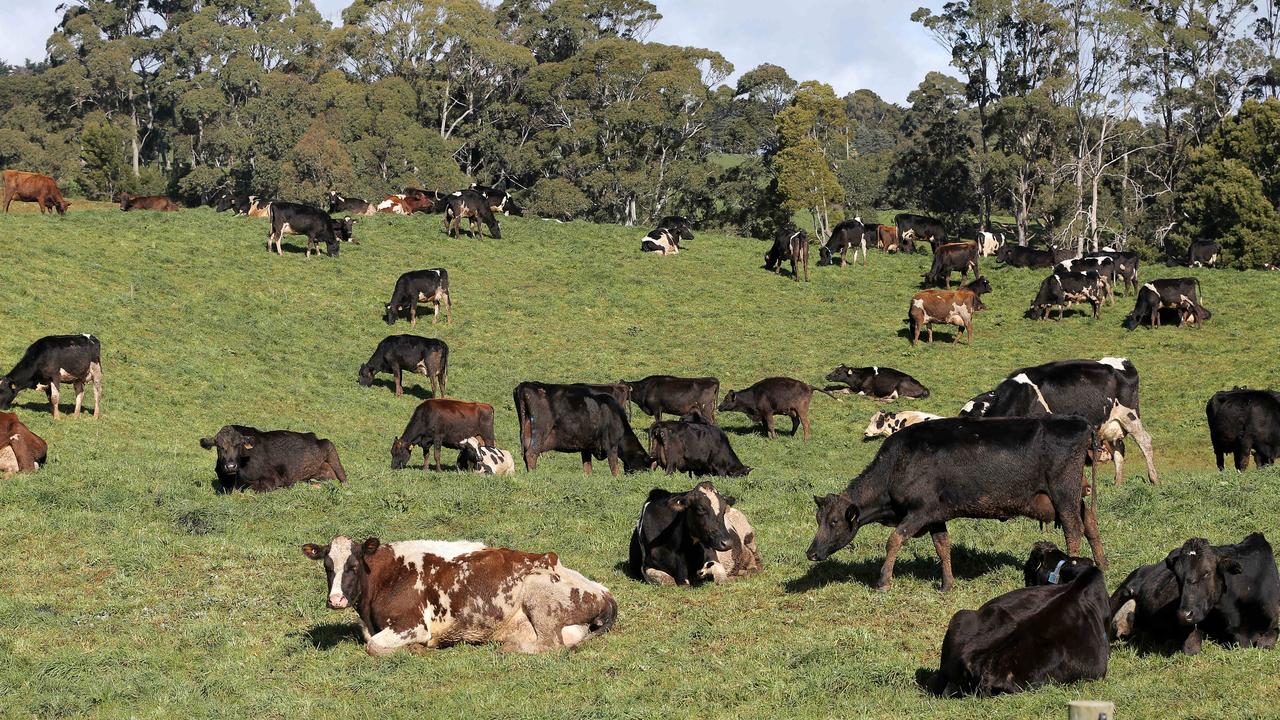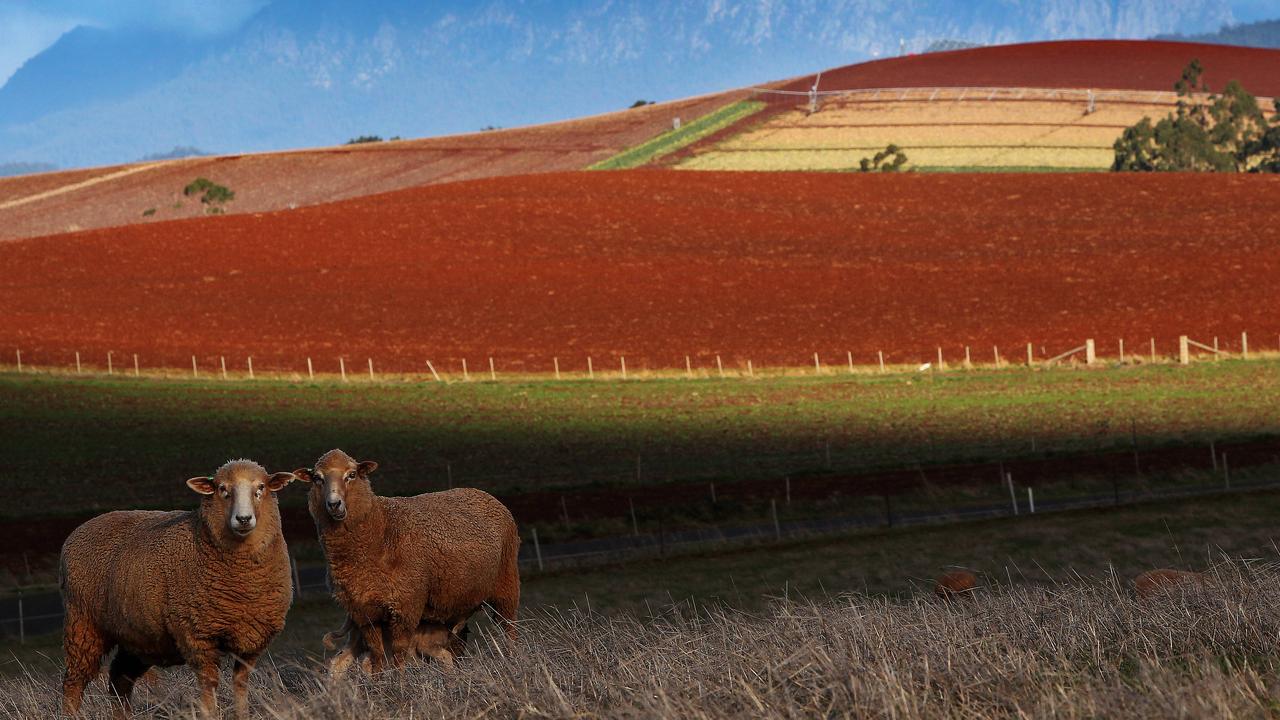New varieties of fodder beet and kale offer more options for dairy farmers
Fodder crops are playing an increasingly important role as a winter feed source for Tasmanian dairy farmers.
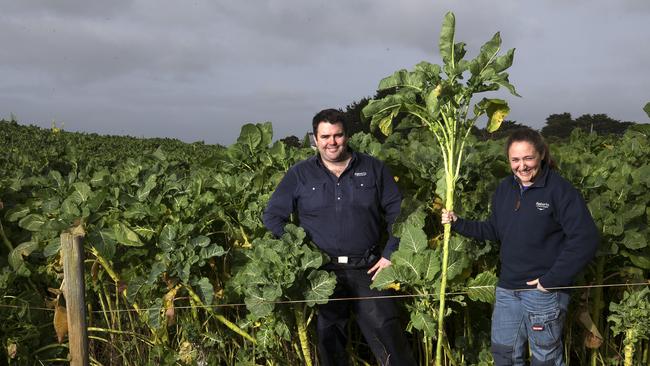
FODDER crops are playing an increasingly important role as a winter feed source for Tasmanian dairy farmers.
While crops like turnips and rape have been used regularly by some farmers, new varieties of fodder beet and kale are now offering more options.
In the state’s North-West, Roberts agronomist Kurt de Jonge said farmers were getting good results with both crops.
On the Finlayson family’s run-off block at Redpa, a crop of kale is ready for grazing. Planted in spring, the crop will produce between 12 and 14 tonnes of dry matter a hectare.
Mr de Jonge said most farmers used the crops to feed dry dairy cows. However, they could also be used for youngstock.
“Kale has been getting more popular as a wintering crop,” Mr de Jonge said.
“A lot of farmers are using fodder crops to transition from old pastures to new ones.”
Like with most brassica crops, Mr de Jonge said stock needed to be introduced to kale gradually to prevent health issues.
“The palatability of kale is quite good, but we just have to watch the fibre levels. It doesn’t have much fibre so they normally give them access to hay or straw as well,” he said.
While both crops take a long time to grow, Mr de Jonge said they also provides large amounts of feed off a small area, which allowed farmers to rest their pastures.
“In a crop like this you should
be able to get between 80 per cent and 85 per cent utilisation, so there’s not much wastage,” Mr de Jonge said.
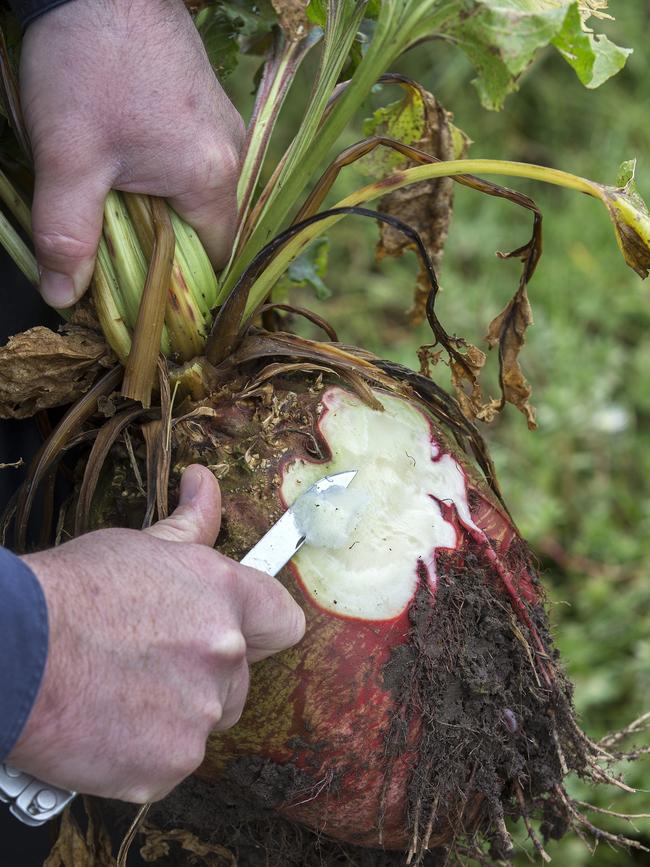
On the Quilliam family’s property at Togari fodder beet is being used to feed dry cows.
This is their third year using the crop and they say despite the long growing time fodder beet has a number of advantages.
High in digestible energy, fodder beet has to be introduced slowly to livestock to prevent acidosis.
The Quilliams start feeding small amounts of fodder beet to their cows before they are dried off.
The farm’s second in charge, Mercedes Quilliam, said once they got a taste for it, the cows are keen for more.
“They absolutely love it,” she said.
“Once they get into their routine they’re all there waiting at the gate to go in everyday.”
Fodder beet is a little more expensive to grow, but with production of around 30 to 31 tonnes of dry matter per hectare, Mr de Jonge said the amount of feed produced made the crop worth the wait.
Miss Quilliam said making sure the cows were not too hungry when they go in on the crop is important.
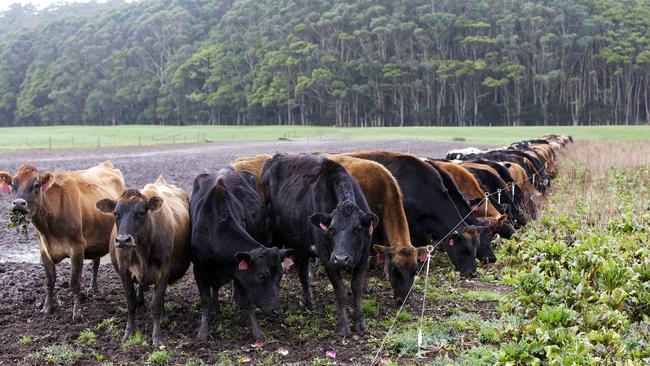
While strip-feeding the crop the Quilliams also use special pegs in the electric fences that do not have insulation all the way down to prevent to cows form pushing them over and getting more than their allocated area.
After being started with just a small amount, the cows are now eating about 10kg/DM from fodder beet each day as part of their diet, which also includes hay, silage and pasture.
Mr de Jonge said for good results fodder beet had to be precision- drilled but it was a good way to help put condition on cows before calving.
“It’s like Red Bull for cows,” he said.
“This is the most we’ve sown this year, so it’s being used more and more.”
The fodder beet bulbs can grow up to about 20kg in size, but because they are relatively soft, Mr de Jonge said the cows have no trouble eating them.
Making sure fodder crops are well established is crucial for success.
“One of the biggest limiting factors for all fodder crops is fertility, so you need to look after them,” Mr de Jonge said.
“They can produce a lot of feed off a small area though, so it’s worth making sure the preparation is right and they establish well.”

